Hot water bottle in hand, I snuggle up to the frosted window and open my eyes to a sublime view of Peru’s Andean countryside. The rugged peaks of the Andes, the sacred “Apu,” stand out across this vast emerald valley. Alpaca graze the slope behind my cabin. I sit and listen to their soft humming sounds until an eruption of giggles breaks the silence. The children have woken up and they’re playing with the herding dog, their weather-reddened cheeks puffy with smiles.
How lucky am I to be waking up in this magical place — the remote village of Chaullacocha, Peru.
***
Like many good travel stories, I have a serendipitous encounter with a taxi driver to thank for starting my time in Chaullacocha. I was seeking a guide to show me beyond the popular Cusco itinerary highlights (Machu Picchu, Rainbow Mountain, etc.), so he brought me by a tour office, they made a few calls, and voila — I got connected with Domingo of Kallpa Travel. Over coffee and cheesecake the next day, Domingo spoke about his unique off-the-grid astrophotography tours, homestays, and glamping treks, and it felt like the stars had aligned!
EN ROUTE TO CHAULLACOCHA
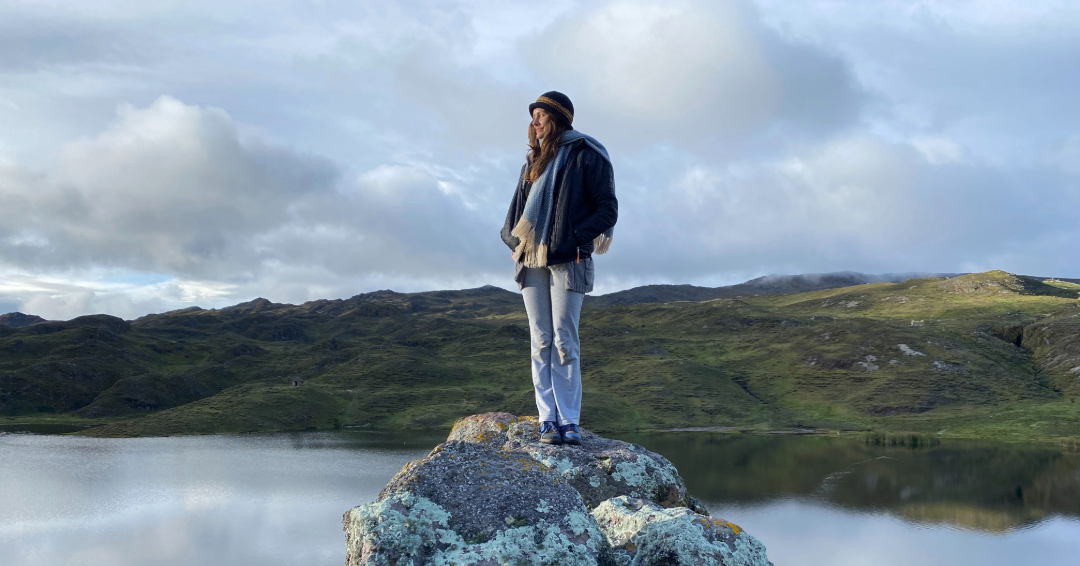
With Domingo’s promise of seeing the “real Peru,” we headed towards the home of Augustín: a father, alpaca farmer, and leader of the rural Chaullacocha community about 3 hours east of the Sacred Valley. From the passenger seat, my eyes traced swirls of ancient mountain footpaths and scores of purple flowering potato plants. The landscape here tells a story of millennia-old traditions; agriculture and herding as a way of life.
Remember, life in the Peruvian Andes has persisted relatively the same since well before the Inca Empire.

As you can imagine, it was cold. The further we drove into the Andes, the more layers I added. First a beanie, then a sweater, then a jacket — all clothes I scored second-hand just in time for this trip. After a while, everyone we passed wore traditional Andean clothing: women in colorful pollera skirts and ornate montera hats, and men in beige trousers with red-tasseled caps on their heads. These are Quechua people, the largest indigenous group in Peru.
Of course, there were also Quechua people — mostly young men — in jeans and t-shirts. Though western style is more popular these days, the bright traditional clothing was the norm for over 1,000 years. Domingo (who is also Quechua) explained to me that this colorful, seemingly cumbersome garb keeps people visible to one another in the mountains while also bringing joy amidst the challenges of high Andean living.
WELCOME HOMESTAY
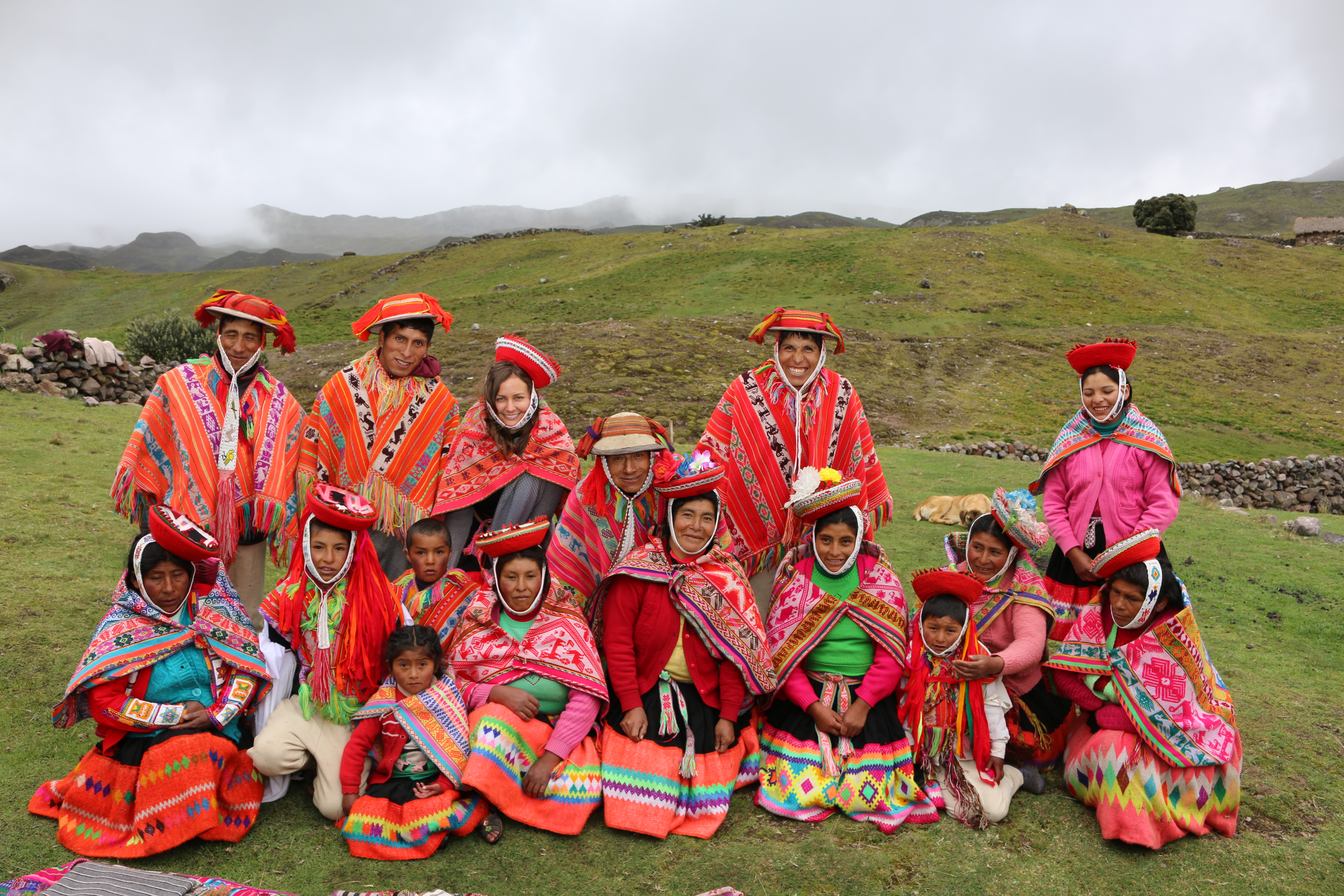
We ditched the car at a pass with a sign marking the elevation at 15,000ft and headed off on foot, weaving around alpaca and llamas (and their droppings) toward the homestead. The mountain terrain felt unfamiliar to me. Bouncy and full of craters like the surface of the moon. And so green. Every few steps Domingo crouched over the earth, adjusting the micro-lens of his smartphone to capture the “pequeños universos” of the flowers.
The delicate dimension and sacred patterns of perfect nature; revealed only to those who care enough to see.
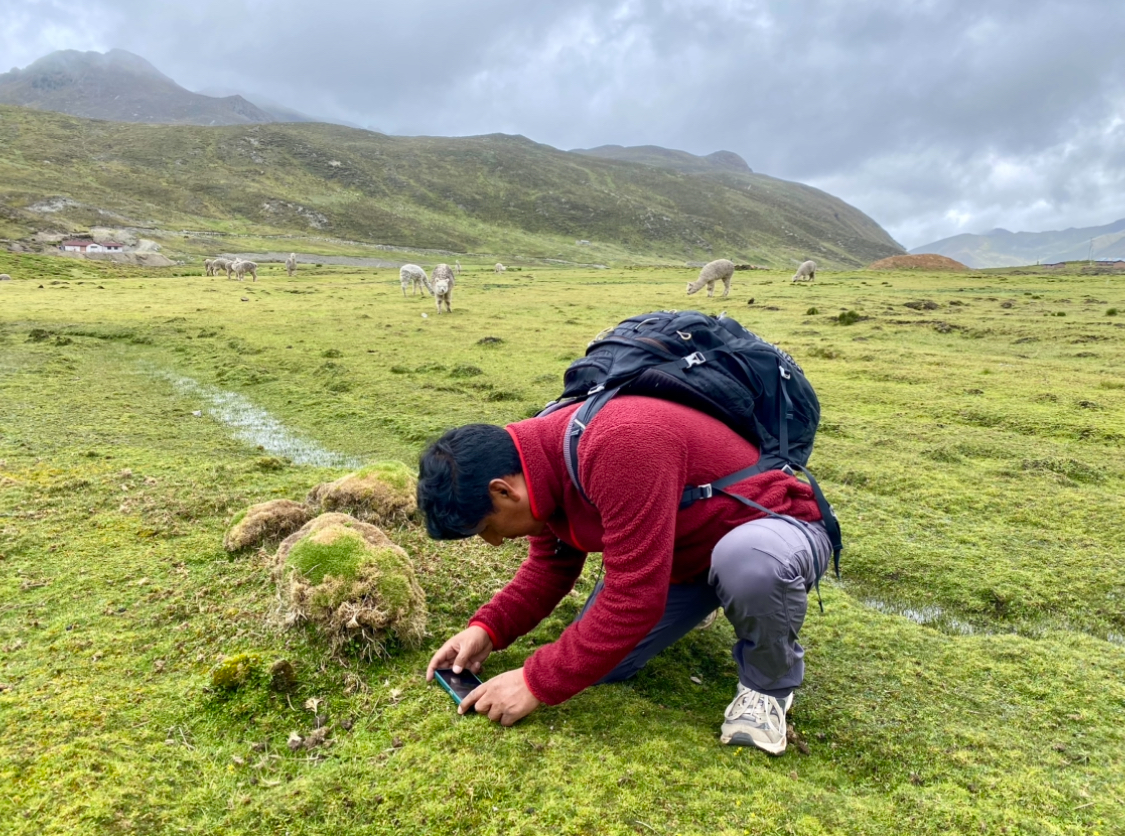
Homestay tourism in Chaullacocha slowed after 2020, so it had been a while since the families had seen anyone who looks like me. Domingo warned me they might be a little shy. But when we reached the wooden gate, four joyous ladies in beautiful Andean dress draped me in a pink strewn flower necklace, warmly welcoming me to their village for the night. Their skirts swished back and forth as they led me to my cabin on the hill behind the main house.
View this post on Instagram
All the rooms — a kitchen, small bathroom, and four guest cabins for homestay-ers like me — are made of adobe and stone. I was glad to find the essentials when I got in my room… A big bed, lots of blankets, and a light. But the electricity happened to be out. Of course, my reasons for doing this homestay didn’t include amenities and comfort. So I made an intention to listen closely, ask thoughtful questions, and be grateful for the opportunity to connect with people who know a life far different than I do.
And that is why we travel… isn’t it?
BREAKING BREAD
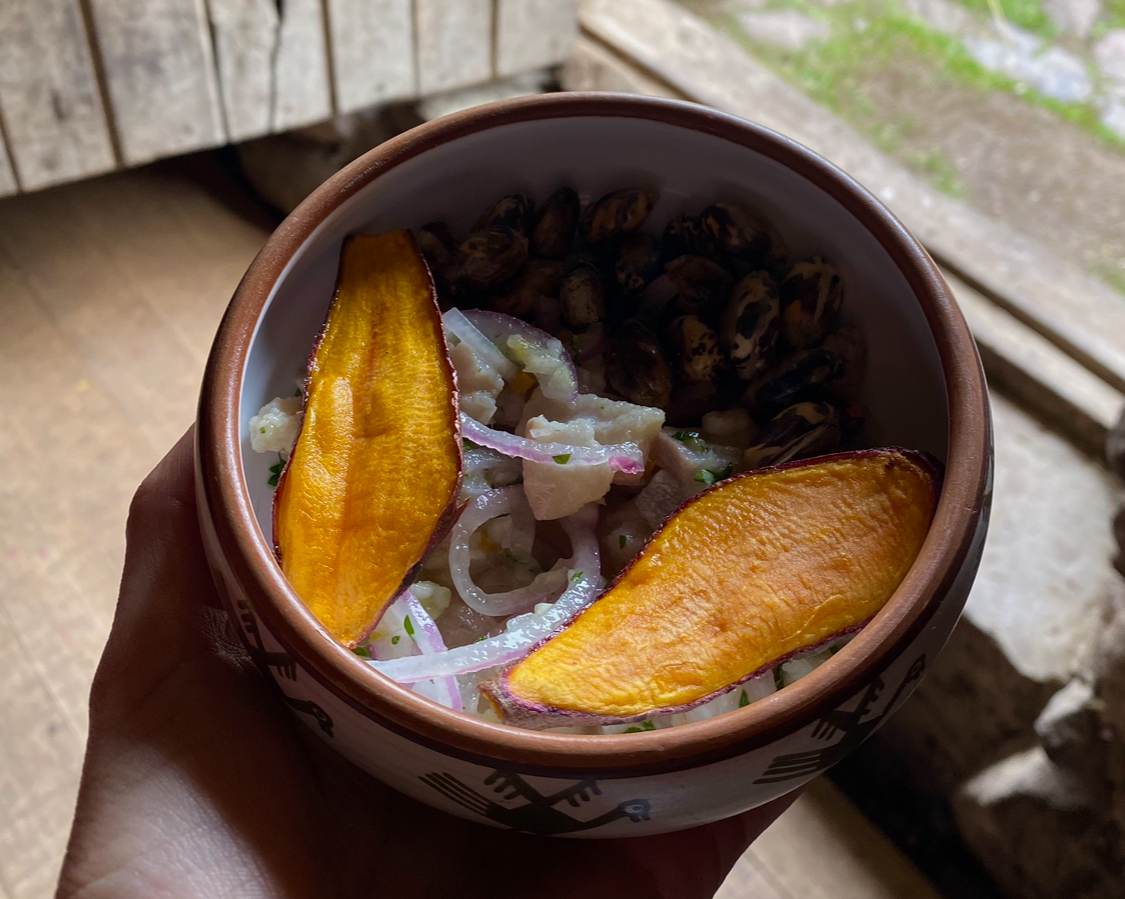
I consider myself fairly well-traveled, but I did not expect to eat the most divine ceviche of my life at 15k feet. It was buttery soft and perfectly acidic, topped with toasted tricolor maiz and a couple of sweet potato slices. There I sat at the long wooden table in the dining room, scraping the inside of the little ceramic bowl to get the last morsels of what might be the only Andean ceviche I’ll ever eat.
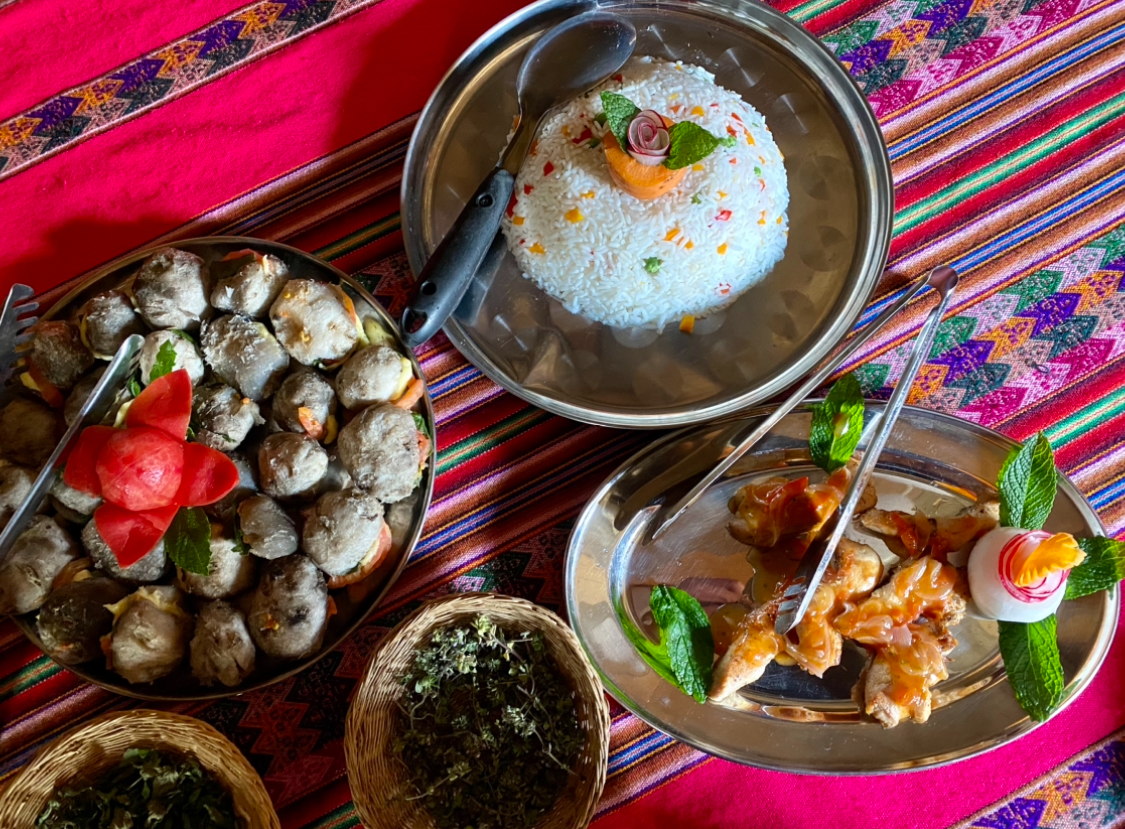
The eldest sons brought in more food and the rest of the families joined. We grazed elbows; sipping soup and passing silver platters of rice, chicken skewers, and potatoes five ways, ooh-ing and ahh-ing over a peeled tomato rose on one dish and a radish mouse on the other. Even breakfast the next morning was creative – a star-shaped frittata. Augustín played a few songs on the charango (Peruvian guitar) as we digested our feast.
For years he worked as a chef on the Inca Trail, hauling gear and cooking three meals a day for groups trekking to Machu Picchu. With homestays, men like Augustín can serve food from their own land (or lake), help the women weavers sell their goods, and share Quechua traditions with people from all over the world. Homestays help sustain their ancient way of life, which is especially important as younger generations drift away from their roots in hopes of economic gain.
THE WOMEN OF CHAULLACOCHA
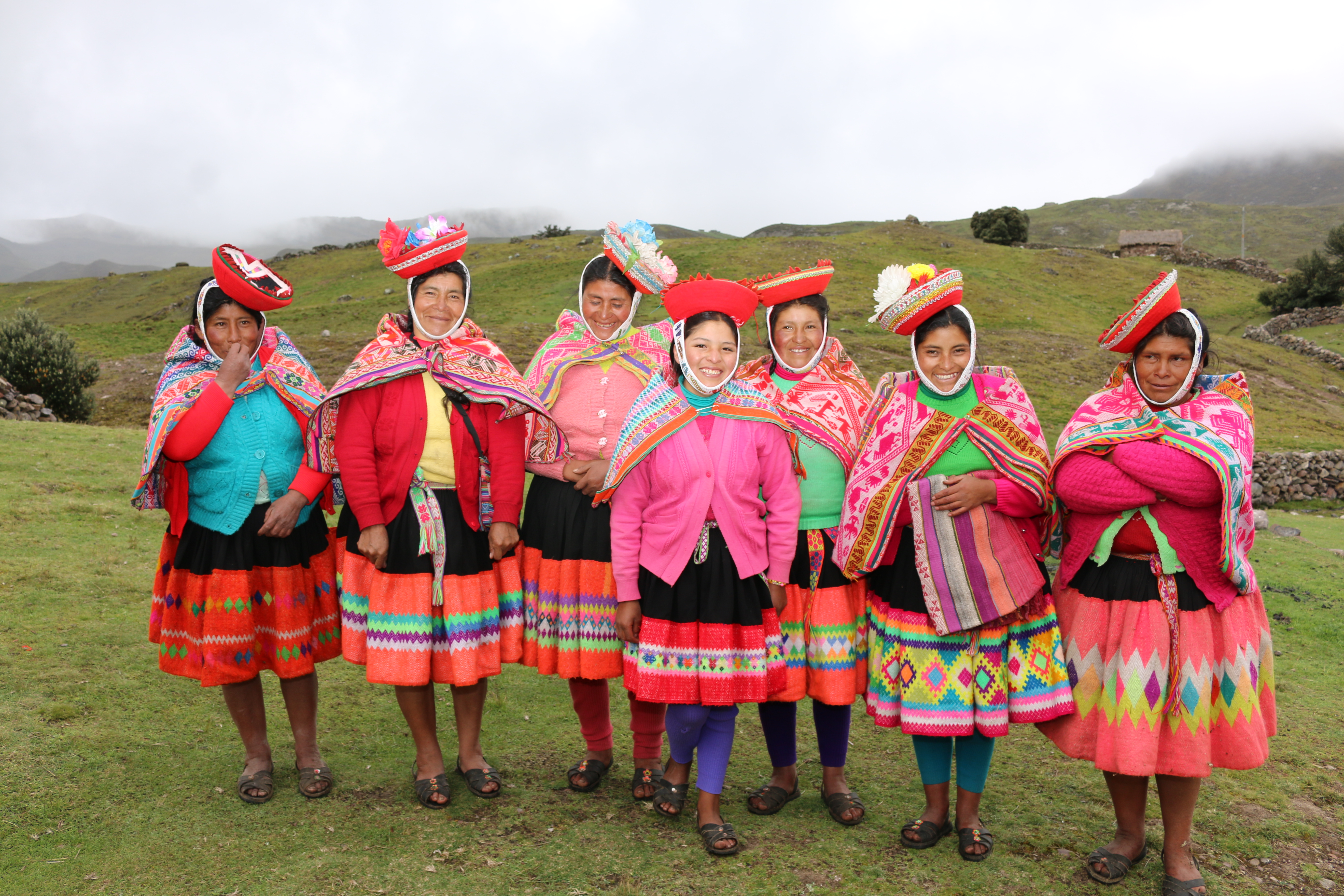
The Weavers
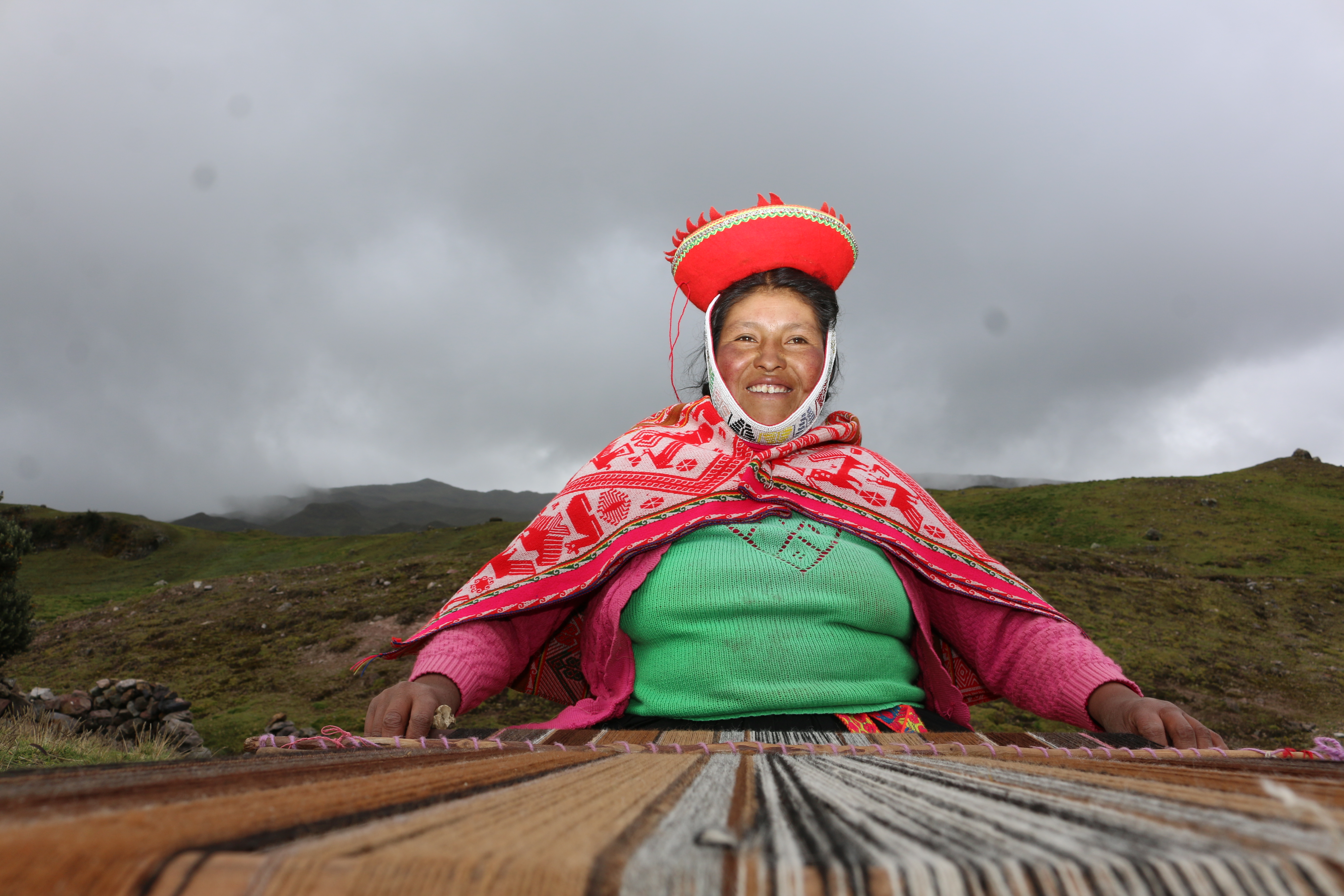
After lunch the women weavers of Chaullacocha gathered on the lawn to showcase their artistry. Weaving alpaca and llama fibers is a skill passed down through generations in high Andean communities. At around eight years old, girls will begin spinning fur into yarn while walking the mountains and valleys with their mothers and aunties. It becomes so second nature, they don’t have to think about what they’re doing. They achieve a flow state with their craft.
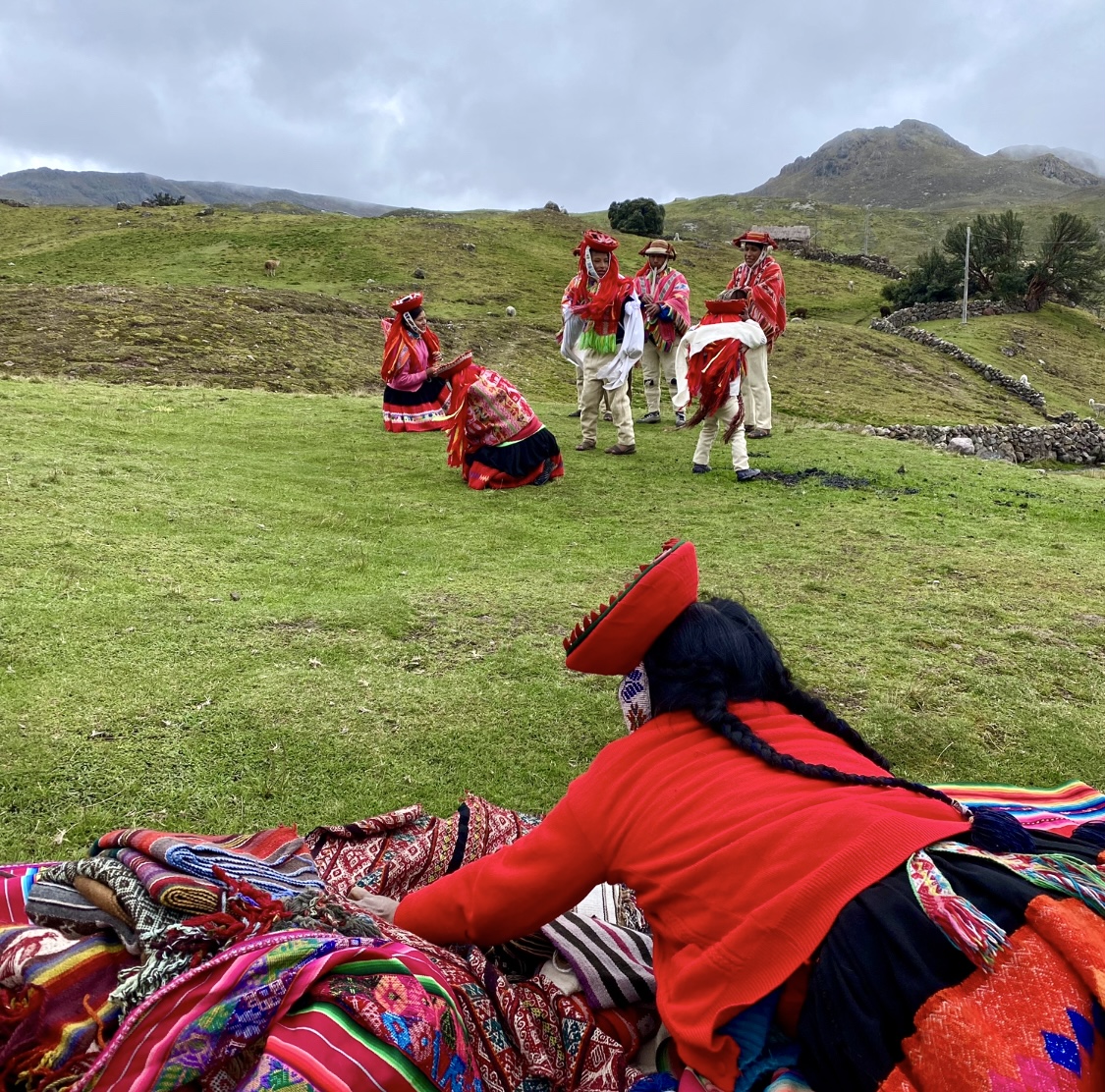
Peruvian weaving has garnered admirers from around the world for its intricate designs and vibrant colors. I was stoked to buy some one-of-a-kind gifts for my family and learn about the symbolism of the animal patterns and various color threads. Purchasing directly from the hands of the women rather than at urban markets felt good; proceeds go directly to those who truly deserve it.
The fathers and children were performing traditional dance on the slope in front, of course, I joined in. Laughter filled the air as we spun and I tried to follow their steps, bridging cultural gaps through the universal language of dance.
Cuy Breeding
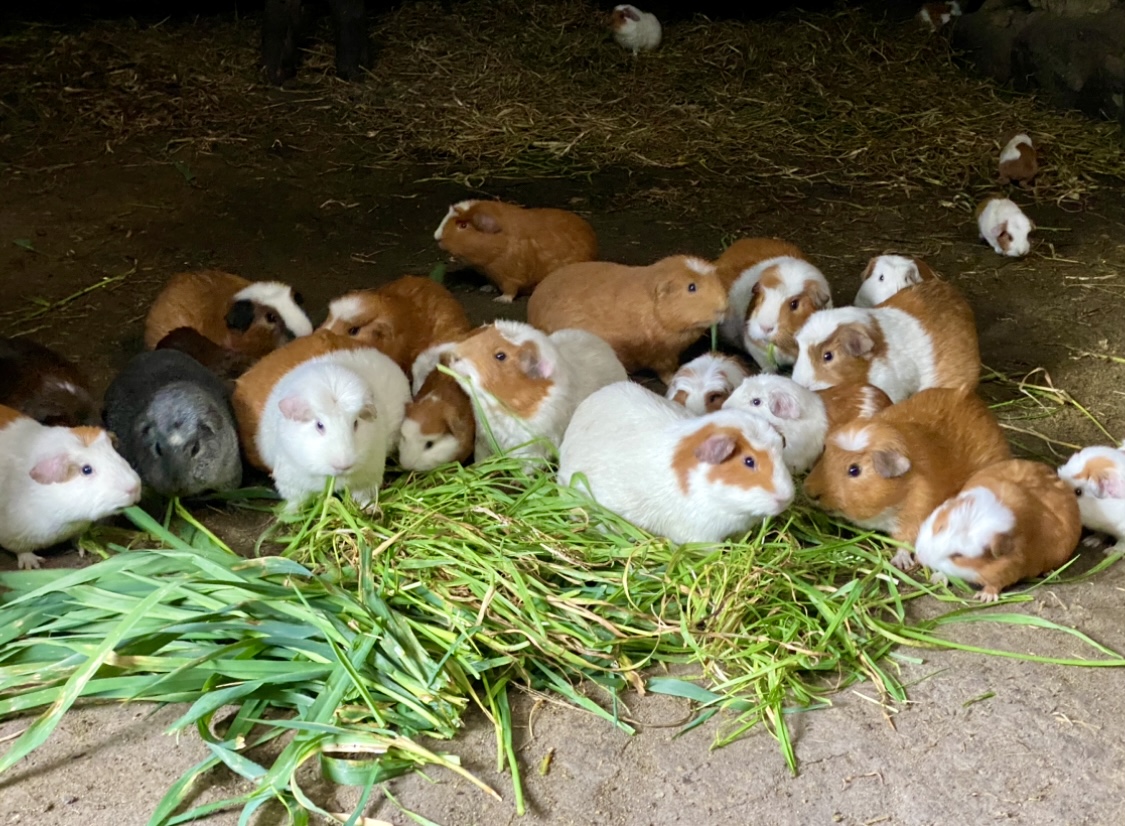
We then visited the home of a matriarch who breeds guinea pigs — yes, guinea pigs! They’re an Andean delicacy called “cuy”, and I ate them a couple times while in Peru. Among the Andean nations, Peru boasts the largest population of 35 million guinea pigs. It’s common for each village to have a cuy breeder, and in Chaullacoha, we were looking at her, Lucia. She sleeps above the few dozen guinea pigs on a bed made of wood, natural fibers, and woven blankets. Fascinated by this, I bought one of her stunning fine woven table runners to take home.
I was intrigued to learn from Lucia that guinea pigs are used in traditional healing to treat human illness. The rodent is passed around an individual to absorb disease. Interestingly, the guinea pig often dies after the healing. Before we departed Lucia’s home, the little girl who’s been tracing our footsteps captured a baby guinea pig and placed it in my arms.
Trout Farming
View this post on Instagram
The little girl lives just down the road, so we head that way to meet her mother, Benedicta, who has engineered a remarkable rainbow trout farm using a PVC pipe system. I was mind blown. This is the rainbow trout in the ceviche! Benedicta set up plastic tubes to funnel trout from the stream behind her house into hand dug pools. Quechua people work with nature, not against it.
Tears welled up in my eyes as I could no longer deny the lingering thought in the back of my mind, these people — this way of life — it’s nothing short of a miracle. It’s brutal and trying but beautiful, and has managed to stand the test of time.
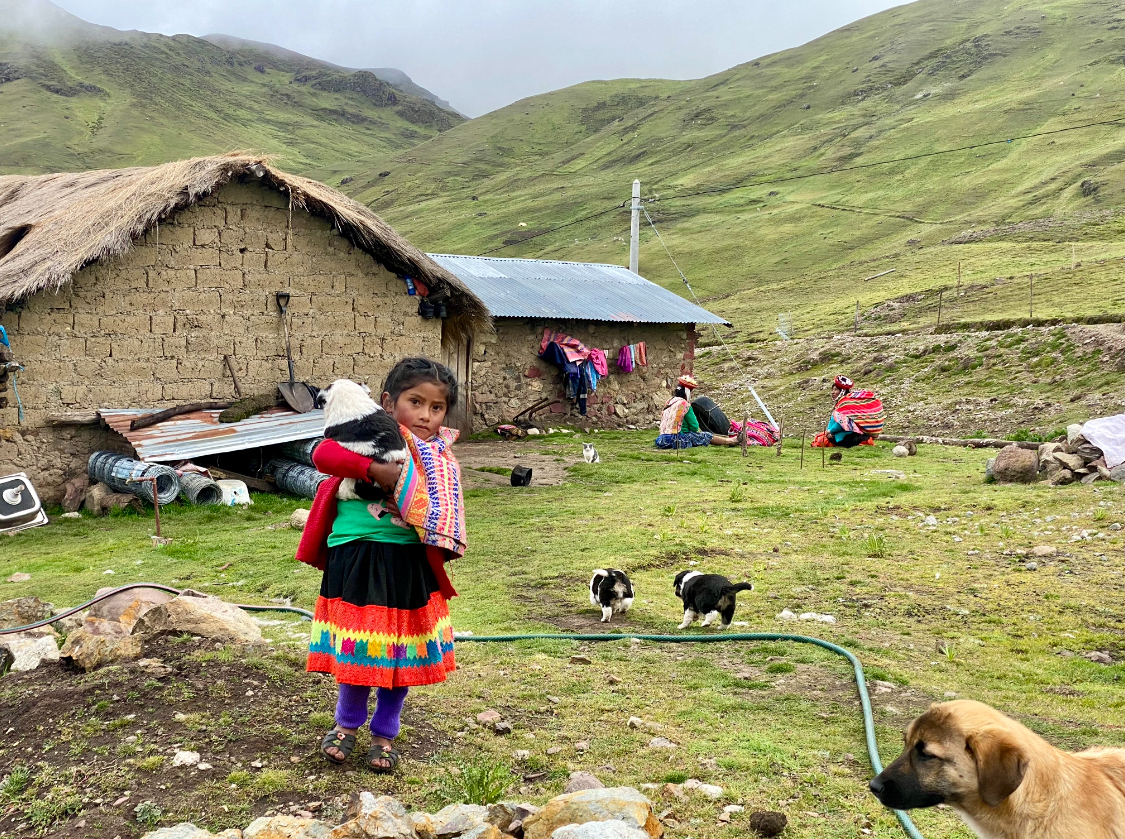
I asked Domingo how aware the families are of the state of the world: the wars, expansion of globalism, and virtual reality… He said they hear about these things — they know they exist — but the concepts don’t preoccupy their thoughts. The people of Chaullacocha live a life that most people in modern society don’t understand: simple, in communion with the natural world, living closely with their lineage, and in support of their neighbors.
Surrounded by expansive mountainous terrain, I glimpsed the humble yet resilient lifestyle of Peru’s high Andean communities, witnessing traditions and heritage that can serve to teach the collective about returning to our roots. Siblings to one another, and children of the mountains, stars, and sky.
—
Thank you to the Agustín family for welcoming me into your home.
View this post on Instagram
If you’d like to stay with Augustín’s family in Chaullacocha outside of Cusco, Peru, get in contact with Kallpa Travel here.







